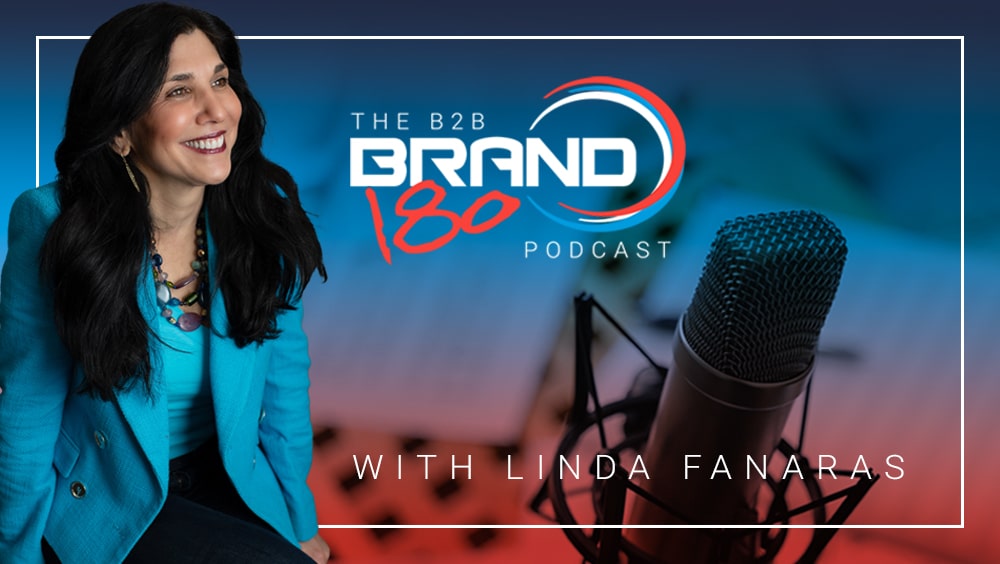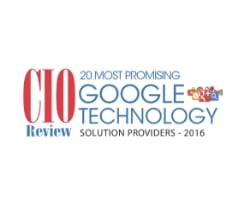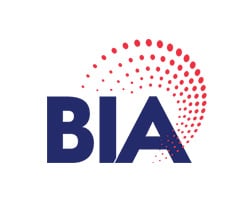In this episode of B2B Brand180, Linda interviews Jarie Bolander, an expert in B2B storytelling. Jarie offers insights and strategies for transforming B2B brands with compelling storytelling. He explores the power of emotional appeal, logical progression, and credibility in persuasive storytelling, as well as the significance of aligning narratives across various platforms and marketing materials. Additionally, Jarie presents a valuable framework for weaving storytelling into B2B branding and strategy.
More about Jarie:
https://www.linkedin.com/in/jariebolander/ and https://decisioncounsel.com/
You can follow Linda at: https://www.linkedin.com/in/lindafanaras/
and visit Millennium Agency at https://www.linkedin.com/company/millagency/
Linda Fanaras:
Hi, I’m Linda Fanaras, host of B2B Brand 180 Podcast and CEO Millennium Agency, where we’re going to talk about branding and growth strategies. But before I start, I just want to take a moment and thank our listeners. And if you like what you hear today, feel free to like, share or subscribe to help our channel grow. And today I’m excited to bring in Jarie Bolander from Get Story Driven. He’s from San Francisco, California, and Jarie is an advocate for empowerment of minorities and females in business. And that’s always great to hear. from what I understand, he loves a locally crafted espresso, and he loves to figure out super complex things and bring them to people in a very clear and concise and compelling way. He helps bring and build more ethical, inclusive and resilient world by educating and inspiring the next generation of entrepreneurs, whether they’re 18 years old or 80. So, so welcome, Jarie. Thanks for joining in today to the B2B Brand 180 podcast. I’d love for you to start by giving us a quick introduction.
Jarie Bolander:
Sure. Thanks, Linda, for having me. Well, I mean, you covered a lot of it, which is great. Awesome.
Linda Fanaras:
Awesome. Yeah,
Jarie Bolander:
I’ve been, I’ve been doing startups better part of 30 years. Used to be an engineer, you know, so I say I’m a recovering engineer. Went to the dark side of marketing and really because of a girl usually all great story startup. And I met a girl. That’s right. I met a girl. Yeah. Her name was Jane. She was my wife. She actually passed away six years ago from leukemia. Which, you know, pretty tragic ’cause she was only 36. And, you know, she, she really got me into doing this sort of work. Now I’m at a company called Decision Council. We’re a B2B go to market strategy company in Berkeley, California. You know, we love nothing more than getting complex, long sales cycle type companies and figuring out how to grow them. You mentioned get story driven, which is something that I’ve been. Working on for the better part of six or seven years, just trying to help people tell better stories. What I’ve found is that the best story wins products democratized. tell me a story and you capture me forever. So, that’s sort of where I’m at and I’m happy to be here. I love it. This is so much fun. I can’t wait to dig in.
Linda Fanaras:
I love to talk about storytelling because I think that’s one area where sometimes. Companies struggle, they have a story, but it really needs to be framed in a way that is compelling and interesting and emotional. Otherwise, it doesn’t make that one to one connection and it’s not really that effective. So, so that’s why I am really excited for you to talk a little bit about, So how do you tell a better story for a B2B audience? How would you go about
Jarie Bolander:
that? all, all stories in business are persuasive, right? And they follow a pretty simple pattern that was first documented in the, in the Western world by a guy named Aristotle, you know, old Greek guy back in the day. And his rhetorical triangle is really the basis for all influencing all persuasive storytelling. So the first, his first kind of pillar is something called the pathos, which is the emotional appeal. So you mentioned about being emotional. People need to be. before they act. The second part is something called the Logos, which is the logical progression to get me to where I am, to where I need to be. Simple. Step one, step two, step three, right? The last part is what’s called the ethos or the credibility. Like, why should I trust you to get me to where I need to be? so all great stories of persuasion have those three components. And a lot of B2B companies tend to focus over, I say over rotate on the logical features, functions is what we do. And they mostly talk about themselves. They don’t talk about the problems they solve. They don’t talk about the opportunity. They don’t put themselves in the customer’s perspective, because if we were to talk about storytelling, the customer is the hero of the story. It’s not the company, it’s the customer, you know, as the company, you’re the mentor helping the customer, the hero. Overcome the villain to save the victim victim is right and for whatever reason and I’m have a theory on this that it’s super half baked so it’s probably not ready to share it. B2B companies don’t think that way. And my biggest struggle where I work here at Decision Council is trying to get them to shift the mindset to more narrative, emotional storytelling that solves problems for their customers, as opposed to the laundry list of things, their tool. platform buzzword bingo. We thingy. That’s
Linda Fanaras:
right. Cares. No one cares. No one cares. it’s absolutely true. And you know, you always have to look at those pain points. And when we worked with B2B companies, a lot of times they’ll say, okay, well, we have great service. Well, that’s great. I think it’s important to have great service, but how can we frame that great service in a way that’s actually emotionally connect with your audience? Because you and every other B2B company says they have great service or quality products. So how do we frame that to make it really? enticing and compelling. How do you go about tackling storytelling for some of these clients, whether they’re B2B or B2C or whatever the case may be? Do you have a framework
Jarie Bolander:
that you use? There’s the story driven framework that we talked about a little bit. So, one of the things I, I tend to do is I have this idea called the marketer six core questions. One must answer these six core questions or one does not know what the hell they’re doing, in my opinion. Right, right, right, right. Everyone’s got their thing, right? So for me, the, the, the six questions, the first question is what’s your core value? What do you, what do you actually deliver? Performance, your worldview, et cetera. The second is what’s your big idea? Why do I care? What’s your elevator pitch? What’s the thing that’s going to get me to say, Oh, tell me more. Tell me more about that. I really want to understand that. The third question is what’s called the through line. How do I get from point A to point B? So how do I And throughout the entire journey of a customer, how do I go from a prospect to a customer to an advocate? And what’s the arc? What’s the story arc? How does it connect together? A lot of times that is disconnected in a big way, as you know, right? Like I used to say, who, who thought of this, right? The next, the next one is something called the wants and needs. A want is, a want is external and need is internal. In order to get to the true need, the internal feeling, you got to get through the want, which is external. So, you know, want might be, I need to close, you know, I need to close 10 deals a week. The real need is I need to make sure that I’m making progress on towards my plan and I’ve got quality leads I can send to sales. The next one is the structure and the service. So what’s the structure of the offer and who do I service? Who’s my customer, And those go hand in hand. And then the last one is what are called requirements and conventions. What’s absolutely required for this project and what are just the general conventions. And once you’ve asked, asked and answered those market or six core questions, you can, you can then start formulating a narrative that ties it all together. And typically what we try to do is interview as many customers as we can, internal people and really try to get at the core of like, why do people care? You know, what, what, what problem are you really solving for them? And then we center the narrative around that problem Okay. Or the opportunity, right? Okay. So, if you’re a marketing company and you sell leads Right. The problem you’re solving is okay. Well, I, you know, marketing needs to give so many leads to sales Fine. Everyone needs that. But the real challenge is how do I get quality leads that sales actually likes. Right. Right. Right. Right. What’s the battle sales and marketing hate each other because here’s my marketing qualified lead and sales is like, this is total crap. Right. Right. Right. And that’s, that’s visceral. I mean, there’s not a marketer cowering in the corner somewhere that doesn’t want to have to talk to their CRO, the crappiness of their leads. Or brand building is another one. You know, how do I build a better brand? How do I get that connection? So those marketer six core questions are pretty critical. We also have a bunch of other frameworks here at decision council that we use as well, that Our going in position always is value. What am I, what problem am I solving? What opportunity can we take advantage of not whiz bang, super cool. You know, it’s not like about the company. It’s about the customer and how we can help the customer grow and thrive.
Linda Fanaras:
Yeah. Do you you know, I hate to put you on the spot, but what would be a good example of you putting together some sort of story together for a company What are the elements that you might put into something like
Jarie Bolander:
that? here at Decision Council, one of our clients is Calix. They’re a platform for broadband service providers, typically rural community focused broadband service providers. So if people that give you your internet, right, they, from a storytelling perspective, I mean, they’re a public company, you know, billion, I think they’re a billion plus star company. Great, great company with a solid vision of we want to simplify your business. Excite your subscribers so you could grow your value. And those are all outcome based stories that you can then pull on the thread. Thread. How do you excite your subscribers? Right? Oh, we give them value added. Bundles and features and offers, right? It’s not like give you five gig, 10 gig for 25 bucks or whatever. It’s what’s the value. And so their entire narrative, which you can see on their website, the one narrative that resonates really well with people is be the giant in your community, right? Instead Comcast and Amazon and all these giants, you know, that are sucking value out of your community, you can be the giant, right? And that’s powerful narrative because that gives you autonomy and authority to actually go serve your community. It’s transformative. Right. I mean, it’s like, there’s not a person that’s listening to this that wouldn’t feel something in their heartstrings like Oh, wow. That’s really cool. Mm hmm. I haven’t told you what they sell. I haven’t told you what they, I’ve told you a little bit about what they do, but I don’t know that they’ve got routers and boxes and software. You’re just like, what a great value. Yeah. What a vision.
Linda Fanaras:
I think a lot of companies, I think some companies feel like storytelling is important and others just don’t really find the value or don’t even know how to go about it. I mean, can you, I know we’ve already talked about this a little bit, but why do you think Telling a story in a clear and concise and powerful way is, it works. Why does it work?
Jarie Bolander:
It’s in our DNA. We are hard wired to resonate with a good story because that’s how we survived. I mean, you and I are talking over StreamYard because our ancestors told the best story. Hands down. Like, I don’t even know who you are, but I know your ancestors told better stories because we’re here talking to each other. They survived. We, that’s how we make sense of the world. We connect narrative together. That’s the only way we make sense of the world, data, facts, figures, those only solidify the narrative that we tell you, tell ourselves, right? That’s why you see all these people, they’re like, you know, flat earthers, this and that, like, that’s a powerful story that’s based in fact, they’re telling themselves the story. So it’s. In our DNA, it’s how we make sense of the world, it’s how we remember things, it’s how we, you know, it’s how we pass down knowledge from generation to generation and, the storytellers are the ones that change the world. It’s not the bombs, it’s not the guns, it’s the narrative, and that’s, if you want to be the next, the next level of B2B marketing, the next level of marketing, whatever you want your company to survive. Better tell better stories because the world saturated, we’re distracted, right? We just, there’s so much of coming at us that only a good story is going to get through.
Linda Fanaras:
And I agree with that completely, because I think to your point, I was just thinking about that as you were speaking about that is we have so much coming at us and you really don’t remember anything or, or all of the details necessarily, unless there’s a strong story. And that’s because there’s an emotional piece to that. It’s not just facts and figures. It’s emotional. So that’s why people really do recall stories, whether it’s about a B2B company or B2C company, or founder of a consumer based product company. And there was a passionate reason why that person did something. There’s, there’s a memory behind that. I think that that’s what companies need. Marketers particularly need to keep that So before we go to our next question, I just want to take a minute and thank our listeners today for listening in. And if you like what you hear, feel free to like, share, subscribe. So why do you think companies really need to weave once they determine what that story is and how they’re going to present it and, and what that messaging is, why is it so important to weave that into all the collateral branding and strategy and how can they make sure that they get that where it’s supposed to be in the most impactful and effective ways?
Jarie Bolander:
Well, I always like to say what’s get, what gets remembered, gets repeated. So the more clear, concise, and compelling and simple your narrative is, the more people can repeat it and the power of having, so you can either shout louder or have more people repeat your message. There’s only really only two options, right? Shouting louder doesn’t work cause it’s costly and you’re just going to get drowned out. But having multiple people repeat it with throughout your organization, your customers, the world, you know, if you’re a thought leader and so on, et cetera. Amplifies the story, amplifies the narrative. So the real challenge when it comes to integrating the narrative within all of your materials is what’s the arc? What’s the through line? What’s the, you know, what’s the nugget that you can kind of anchor on that people will remember and then repeat? Because the more it’s repeated, the more it gets through, just like anything, like, you know, repetition is what, how we learn. So It’s not easy and it’s how you align your company. So if you think about it from an alignment perspective, the best narratives align everyone in your company to a common goal. So anywhere from the janitor to the CEO can repeat the mantra, you know, like everyone knows what just do it means. Everyone knows, right. Right. You know, think different means like, cause they’re anchored in this narrative. It’s throughout all the materials. So, huh. it’s a lot of trial and error, but it starts with leadership of the company, setting the kind of the strategic vision and the anchor, you know, what’s the, what’s the big idea, like the big idea is really important piece of that your big idea should just transcend throughout all your materials in some way, repeated in some way, but generally, that’s why people have slogans, right? That’s the anchor. So hard to do. I’m not saying it’s easy, but, but vital for a line now and for message penetration.
Linda Fanaras:
So do you start with the nugget or do you start with something more complicated, like an abstract and then from the abstract, you’re building out what that are determining what that nugget is because to your point. You may use part of that, let’s say it is an abstract and it’s succinct, you maybe use part of that for collateral, for your website, for your news release footer. And that, when we speak about integrating this messaging into your materials, you need to make sure that it’s across all platforms that you’re using. But how do you decide, what’s going to go where and are you figuring out, this is the nugget, this is tier two, this is tier three, and maybe it encompasses what’s in, you know, ahead of it. I’m just curious how something like that might work,
Jarie Bolander:
I mean, maybe it does depend on the audience and what level in an organization and what level of familiarity they have with you, if someone literally is never. seeing your brand touch, doesn’t even know what it is. Then you have to start out with the most simplest explanation at the highest level. And I always think of this as sort of like a pyramid or a tier, right, to your point about tiering, right? Mm hmm. Once someone gets to know you, and they’re tell me more, then you go into more detail, so that Right. Which, which should reinforce your hypothesis. Nike would just do it. professional athletes, there’s lots of wood behind the arrow of what that means and how it shows up and performance of the people, right? So, I always like to think of You take the big idea, which is the top easily, the elevator pitch, and then you sort of, you’ll, you’ll, you’ll sort of layer down at different levels of. Specificity and different levels of detail, depending on who you’re talking to. So as an example, your homepage, you would think of it from a homepage, the homepage should be the big idea encapsulated with, with the pathos logos and the ethos literally prove to me that I should go to another page. Right, right, exactly. Right. I mean, just like you get, you know, above the fold, below the fold, whatever. Right. Like you have to really think about that. And then the other pages are more details that reinforce that. So if it’s someone wants to figure out your product. Your solution, or it’s by role or by industry, or it’s a use case or it’s a case study. That’s the detail that they have to find naturally once they’ve, once they’re convinced. Mm-Hmm. by your big idea and, and you’ve proven, you know, your, your, your pathos, logos, and ethos that you’re worth the time to consider. But all of those materials, it, it’s basically proves your homepage or proves your big idea. Mm-Hmm. prove to me that this is right. Okay. This is how we prove it it’s the art of it is trying to figure out The CEO is going to need different proof than the, you know, engineer, Or the director. And so you need to really ladder it up in different ways you’ve got entry points to all of this material and all of these things that are just natural entry points. And that’s hard to do. That’s, that’s, that’s non trivial, but if you have a solid, big idea. Your homepage is very, you know, is like tells the narrative and proves that Pathos, Logos, and Ethos. You will then find, Oh, I need to prove this for the CEO. I need to prove this for asset managers. I need to prove this for this industry. I need this case study. And then it just sort of trickles down and you build it up this sort of body of work, so to speak, improving your case, you know, improving your case.
Linda Fanaras:
No, that makes sense. That’s great. That’s awesome. So before we wrap up, I’m just curious, do you have any key insights that you’d like to share with our audience today?
Jarie Bolander:
A couple of things when you are figuring out your narrative and your story, it’s best to be, to go down really specific. So specificity equals universality is a very common storytelling technique. Which means get as much detail as you can going down, like go down the rabbit hole and then do that a bunch of times. And then so you can boil back up to what’s the real idea, right? So that’s one very important, that means talking to customers, getting case studies, which a lot of B2B companies hate talking to customers, getting case studies, but they’re very important. The second is be as simple as possible. And I always like to say. Explain it to your grandmother. If your grandmother can understand it, then you’re, then you’re doing well. If she can’t try again, because in this world, it doesn’t matter how sophisticated your product is. Doesn’t matter how smart your end customer is. They’re saturated with shit. And you just cannot, you cannot get the message through unless it’s simple, clear, concise, compelling with a lot of compassion and just a lot of, you know, thoughtfulness is going to get you past the barrier, right? It doesn’t matter if you’re selling a medical device or you’re selling a shoe. Exactly the same. We are all irrational, unreasonable, crazy, nutty. We’re human. We’re messy. Huh.
Linda Fanaras:
well, thank you. So that was fantastic. Thanks for sharing, you know, sharing your insights today on storytelling. I think that’s important for companies to take that into consideration when they’re building their brands. So I’d love for you to share how people can get in touch with you.
Jarie Bolander:
Yeah. So you can go over to get story driven. com, which is the story driven stuff. I’m on LinkedIn. Just, you know, Jarie Bolander. I do a lot of stuff on LinkedIn. You can check out decision council. com, which is where I work right now. We do a lot of great stuff in the B2B space, especially strategy, go to market. You know, we’re, we’re one of the people that get, you know, we get storytelling for complex things, which is always fun. reach out, connect on LinkedIn and we’d love to, love to hear your thoughts on storytelling and. What you’re up to. That’s
Linda Fanaras:
awesome. Great. Well, thank you for tuning in to the B2B Brand 180 podcast today. We hope you find that the insights and strategies shared were valuable to you. And again, I’m Linda Fanaras, host of the podcast and also CEO of Millennium Agency. And feel free to visit us at mill, M I L L dot agency, or you can go to lindafanaras. com or just simply connect with me on LinkedIn. Thanks again for tuning in.





























